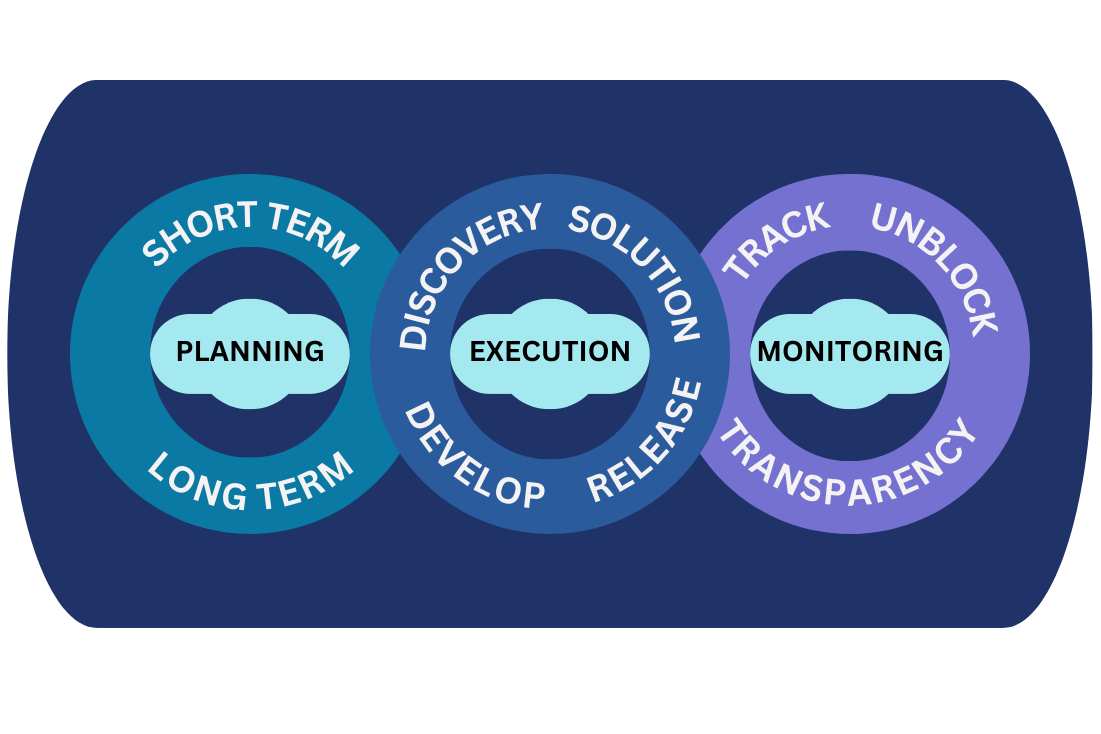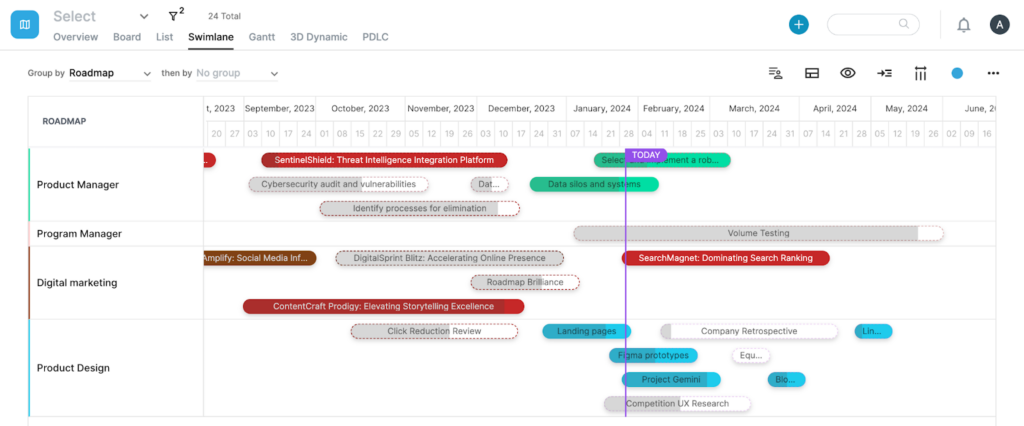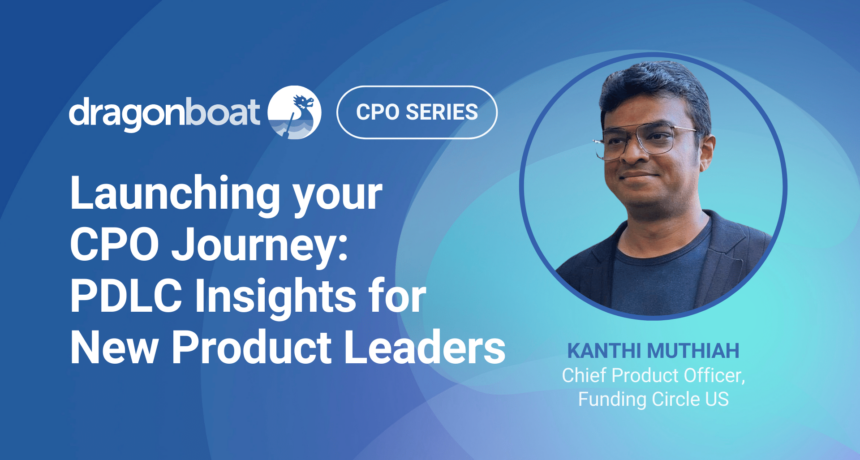The journey of a Chief Product Officer is both exhilarating and daunting. We recently sat down with Kanthi Muthiah, a seasoned CPO with a wealth of experience in the fintech space, in an exclusive CPO Series webinar for new product leaders.
Kanthi shared how CPOs can set themselves up for success, why he considers the Product Development Lifecycle (PDLC) process his best weapon, and which tools or techniques are indispensable for this role.
First 90 Days: Foundation of CPO Success
In the first 90 days, a CPO’s primary focus should be on understanding the team’s composition and capabilities. This involves assessing the skills across product management, design, customer research, and more.
This time is used to assess, strategize, and lay the groundwork for future successes. It’s about building a solid foundation upon which the product’s future can be securely built.
“It’s crucial to assess the skill sets available in your team during the first 90 days.”
– Kanthi Muthiah, Chief Product Officer of Funding Circle US
For CPOs, the product strategy is paramount: you must delve in the first 90 days to grasp the value proposition, revenue models, and competitive positioning. Engaging with customers to unearth their needs and pain points is essential. Your product should not only meet the current market needs, but also anticipate potential future demands. A deep dive on all such topics in the first 90 days will take you far in your journey as CPO.
Learn more with The 90-Day Success Plan for New Chief Product Officers.
The PDLC Process: A CPO’s Best Weapon
For Kanthi, the Product Development Life Cycle (PDLC) process serves as the backbone of product management. A well-structured PDLC process ensures predictability and repeatability in product development.
A good PDLC process, for Kanthi, has 3 layers:
- Planning
- Execution
- Monitoring
Each phase is meticulously designed to align with the organization’s goals and market demands.
“A good PDLC process supports predictability and comprises planning, execution, and monitoring.”
– Kanthi Muthiah, Chief Product Officer of Funding Circle US

1. Planning
For the planning phase, Kanthi advises starting by defining swim lanes, both verticals and horizontals, for different product areas to ensure clear responsibilities and workflow. To manage workloads effectively, he recommends instituting a ‘T-shirt sizing’ approach to distinguish between short-term and long-term planning items. Prioritization is the next critical step, with the product strategy driving priorities based on factors such as revenue enhancement and leveraging the company’s strengths – a concept easier said than done.
For short-term planning, Kanthi suggested conducting sessions once or twice a month, allocating one-third of the resource capacity to these initiatives. In contrast, long-term planning should be undertaken twice a year, or at most quarterly, dedicating two-thirds of the resources to ensure comprehensive strategizing. The outcome of both planning sessions should be a cohesive roadmap that guides the team’s efforts.
Kanthi also addressed handling ‘below the line’ items, which are tasks not prioritized in the current cycle. These tasks should be placed in a backlog, to be revisited and potentially prioritized as capacity becomes available or during the intake for the subsequent planning cycle. This approach ensures that while focus is maintained on the strategic priorities, there is also a mechanism to review and incorporate other valuable tasks into future plans.
2. Execution
Kanthi believes that execution is managed effectively at the swim lane level, by segmenting the overarching roadmap into distinct swim lanes for each department such as product, engineering, and program management, among others. This ensures that each department receives the focused attention it requires, rather than being lost in a singular, monolithic roadmap.

This strategy benefits from establishing clear completion criteria for each initiative within the swim lanes. Kanthi poses essential questions that drive this clarity: How do we define the completion of a solution? When do we consider a release finished? By documenting these criteria, the team gains a concrete understanding of what success looks like for each stage of a project. Clear handover criteria between stages, also facilitates a smoother transition and minimizes ambiguity.
3. Monitoring
Kanthi strongly advises the practice of setting and tracking OKRs at the swim lane level, and tying them to metrics for a balanced view that encompasses both customer satisfaction and business outcomes. Regular monitoring and adaptation based on these metrics allow for agile responses to market changes and internal challenges.
Tools as Enablers of Success
To elevate the PDLC process within the organization, Kanthi made a choice in adopting a PDLC tool to streamline planning and execution, while bolstering transparency and teamwork across the board.
“Dragonboat’s PDLC tool allows you to do planning, execution, monitoring, and drives transparency, allowing everybody to contribute consistently. That drives predictability.”
– Kanthi Muthiah, Chief Product Officer of Funding Circle US
When it comes to choosing the right tool, the necessity of a robust PDLC facilitator was evident to Kanthi. His approach started with a scoring system designed to evaluate each tool against key criteria vital to his team’s needs, including its efficacy in planning, execution, and monitoring.
Kanthi also weighed other critical factors, such as the tool’s compatibility with the company’s existing technological ecosystem, cost-effectiveness, and the availability of reliable support services. He found that Dragonboat’s PDLC tool stood out, offering a seamless workflow from planning to execution and monitoring. This not only enhanced transparency but also encouraged consistent contribution from all team members, leading to predictable outcomes.
For Kanthi, the right PDLC tool is about embedding a PDLC culture that extends beyond product and engineering to all facets of the business at Funding Circle US.
The Mark of a Great Product Leader
In wrapping up, Kanthi delineates the qualities that distinguish a great product leader. It’s not just about mastering the PDLC process or being strategically astute; it’s also about being deeply connected with the customers and being adaptable. A great product leader excels in balancing the immediate with the visionary, constantly steering the product towards uncharted territories of opportunity and innovation.
“Being outcome-oriented and maintaining close ties with customers to understand their needs and feedback is essential.”
– Kanthi Muthiah, Chief Product Officer of Funding Circle US
Through Kanthi’s journey and insights, we’re reminded that the role of a CPO is as much about leading people and processes as it is about the product itself. It’s a role that demands a blend of strategic vision, operational excellence, and a deep empathy for the customer. For those embarking on this journey, Kanthi’s playbook offers a beacon of wisdom, guiding them towards becoming not just good, but great product leaders.
Watch the full webinar on-demand here.
[elementor-template id=”12730″]



